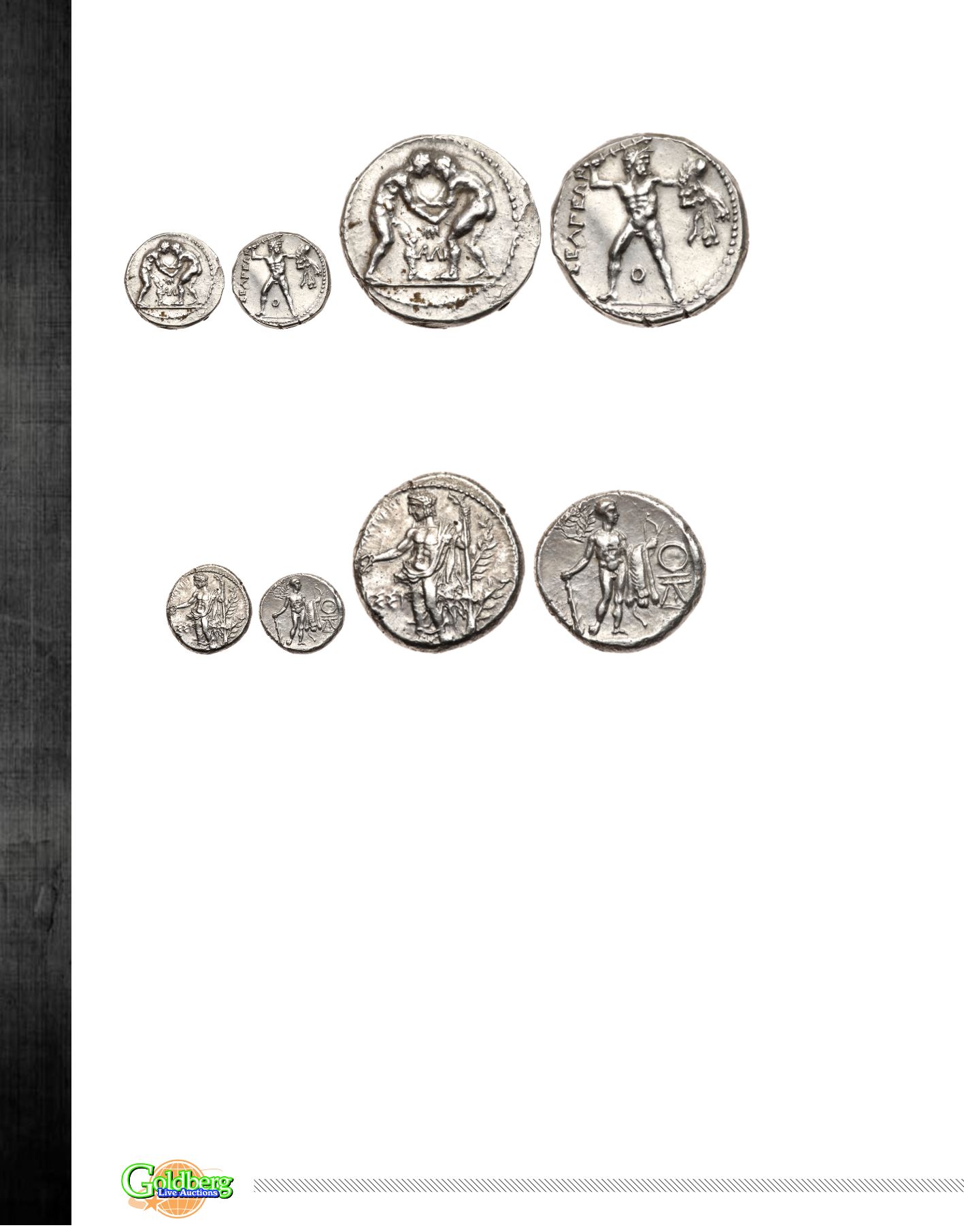

97
|
Session Five - Tuesday, February 14th 10:00am PST
E
XQUISITE
Q
UALITY
S
ELGE
S
ILVER
S
TATER
,
CA
325-250 BC
Enlargement
1749 Pisidia, Selge. Silver Stater (10.70 g), ca. 325-250 BC
. Two wrestlers grappling; between, A
I.
Reverse:
, Herakles standing fac-
ing, head right, raising club to strike and holding lion' s skin on outstretched arm; between legs, O. SNG BN 1936 = de Luynes 2769. Same dies as
NAC Auction 11, April 29, 1998 Zurich, lot #102.
Rare.
Magnificent dies and well struck on excellent metal.
Extremely Fine
.
Estimate Value ........................................................................................................................................................................... $2,500 - UP
From the Herbert & Aphrodite Rubin Collection; Purchased from Harlan J. Berk.
Enlargement
1750 Cilicia, Issos. Silver Stater (10.62 g), ca. 385-380 BC
. Obverse die signed by the artist Apatorios.
, Apollo standing facing, head left,
holding patera and placing hand on laurel tree behind; in upper left field, artist' s signature: A
ATOPIO
.
Reverse:
Herakles standing facing, head
right, resting hand on grounded club and holding bow and arrow, lion' s skin draped over arm; in right field, ankh-like symbol. Brindley grp. 5b;
Casabonne type 3; SNG BN -; cf. SNG Levante 173.
Very Rare.
Well struck and lightly toned.
Extremely Fine
.
Estimate Value ....................................................................................................................................................................... $1,500 - 2,000
From the Hanbery Collection; Purchased privately from NFA in 1989.
This coin is notable for the presence of an artist' s signature on the obverse naming a certain Apatorios as the die engraver. While signed dies are
far more frequently encountered in Greek Sicily than in Persian-ruled Cilicia, we can see why the engraver would have been proud of his work. The
figures of both Apollo and Herakles are stately and reflect an artist very familiar with the proportional canon of Polykleitos. The detailed muscula-
ture of both figures, as well as the hair and leaves on Apollo' s laurel branch, make it easy to imagine the Herakles and Apollo of the coin as rep-
resentations of real cult images worshipped in the temples of Issos.



















